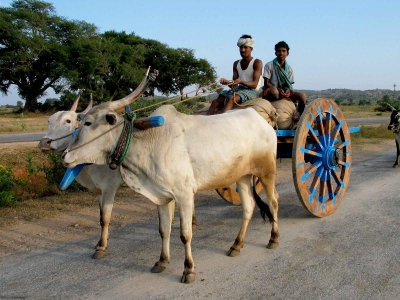
|
Animals kept by humans to help them in farm work, carrying loads, travelling from one place to another, and producing goods for everyday needs, like milk, fur, wool and leather are livestock animals. Cattle, sheep, pigs, goats, horses, donkeys, mules, buffaloes, camels and llamas are livestock. Farmed birds like chicken, turkeys and geese are poultry, not livestock. |
An efficient and prosperous animal agriculture historically has been the mark of a strong, well-developed nation. Such an agriculture permits a nation to store large quantities of grains and other foodstuffs in concentrated form to be utilized to raise animals for human consumption during such emergencies as war or natural calamity. Furthermore, meat has long been known for its high nutritive value, producing stronger, healthier people.
Ruminant (cud-chewing) animals such as cattle, sheep, and goats convert large quantities of pasture forage, harvested roughage, or by-product feeds, as well as nonprotein nitrogen such as urea, into meat, milk, and wool. Ruminants are therefore extremely important; more than 60 percent of the world’s farmland is in meadows and pasture. Poultry also convert feed efficiently into protein; chickens, especially, are unexcelled in meat and egg production. Milk is one of the most complete and oldest known animal foods. Cows were milked as early as 9000 BCE. Hippocrates, the Greek physician, recommended milk as a medicine in the 5th century BCE. Sanskrit writings from ancient India refer to milk as one of the most essential human foods.
Animal products like milk, meat and eggs have long been part of the human diet. They provide us with caloric energy and many essential nutrients. For example:
A 250ml serving of milk provides 150% of the reference nutrient intake (RNI) for vitamin B12.
A 200g serving of lean beef provides 36% and 62% of the RNI for iron for female and male adults respectively .
Many farmers all over the world specialise in producing livestock which are of central economic importance to their farming businesses. Some farmers keep livestock and grow crops as a mixed farming enterprise where the livestock are an integral part of the farm’s system – providing manure to support arable crop growth.
Credit : Brittannica
Picture Credit : Google




